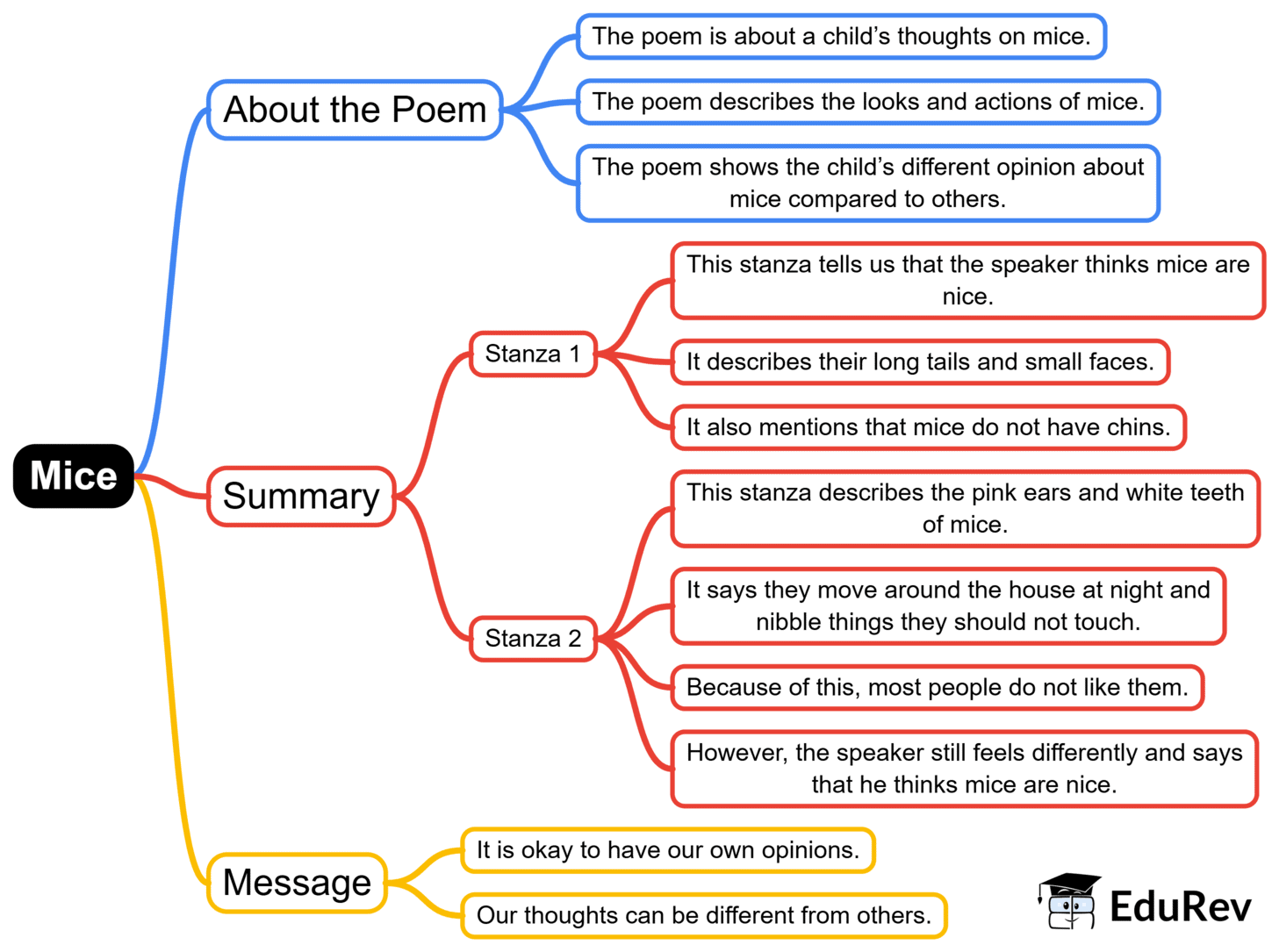Class 1 Exam > Class 1 Notes > English Class 1 ICSE > Mind Map: Mice
Mind Map: Mice | English Class 1 ICSE PDF Download

The document Mind Map: Mice | English Class 1 ICSE is a part of the Class 1 Course English Class 1 ICSE.
All you need of Class 1 at this link: Class 1
FAQs on Mind Map: Mice - English Class 1 ICSE
| 1. What are the main characteristics of mice that make them suitable for scientific research? |  |
Ans. Mice possess several key characteristics that make them ideal for scientific research. They have a short reproductive cycle, which allows for rapid generation of offspring. Their genetic makeup is well understood, with many strains available for various studies. Additionally, mice share a high degree of genetic and physiological similarity with humans, making them effective models for understanding human diseases and testing treatments.
| 2. How do researchers typically care for laboratory mice? |  |
Ans. Researchers provide laboratory mice with a controlled environment that includes appropriate housing, temperature, and humidity levels. Their diet is carefully managed to ensure they receive the necessary nutrients. Regular health checks are conducted to monitor their well-being, and social interactions are encouraged, as mice are social animals. Cleanliness and proper handling are also crucial to prevent stress and maintain their health.
| 3. What ethical considerations are involved in using mice for research? |  |
Ans. Ethical considerations in using mice for research include the principles of the 3Rs: Replacement, Reduction, and Refinement. Researchers are encouraged to replace animal models with alternative methods wherever possible, reduce the number of mice used in experiments, and refine procedures to minimize pain and distress. Institutional Animal Care and Use Committees (IACUC) oversee research protocols to ensure ethical standards are met.
| 4. What are some common experiments conducted using mice in biomedical research? |  |
Ans. Common experiments conducted using mice in biomedical research include studies on cancer, genetics, immunology, and neurological disorders. Mice are often used to test the efficacy and safety of new drugs, investigate disease mechanisms, and study genetic mutations. Their response to various treatments can provide valuable insights into human health and disease.
| 5. How do genetic modifications enhance the use of mice in research? |  |
Ans. Genetic modifications, such as creating transgenic or knockout mice, enhance research by allowing scientists to study specific genes and their functions. For instance, transgenic mice can carry genes from other species, providing insights into gene function and disease pathways. Knockout mice, which lack specific genes, help researchers understand the role of those genes in development and disease. These modifications help create models that closely mimic human conditions.
Related Searches















